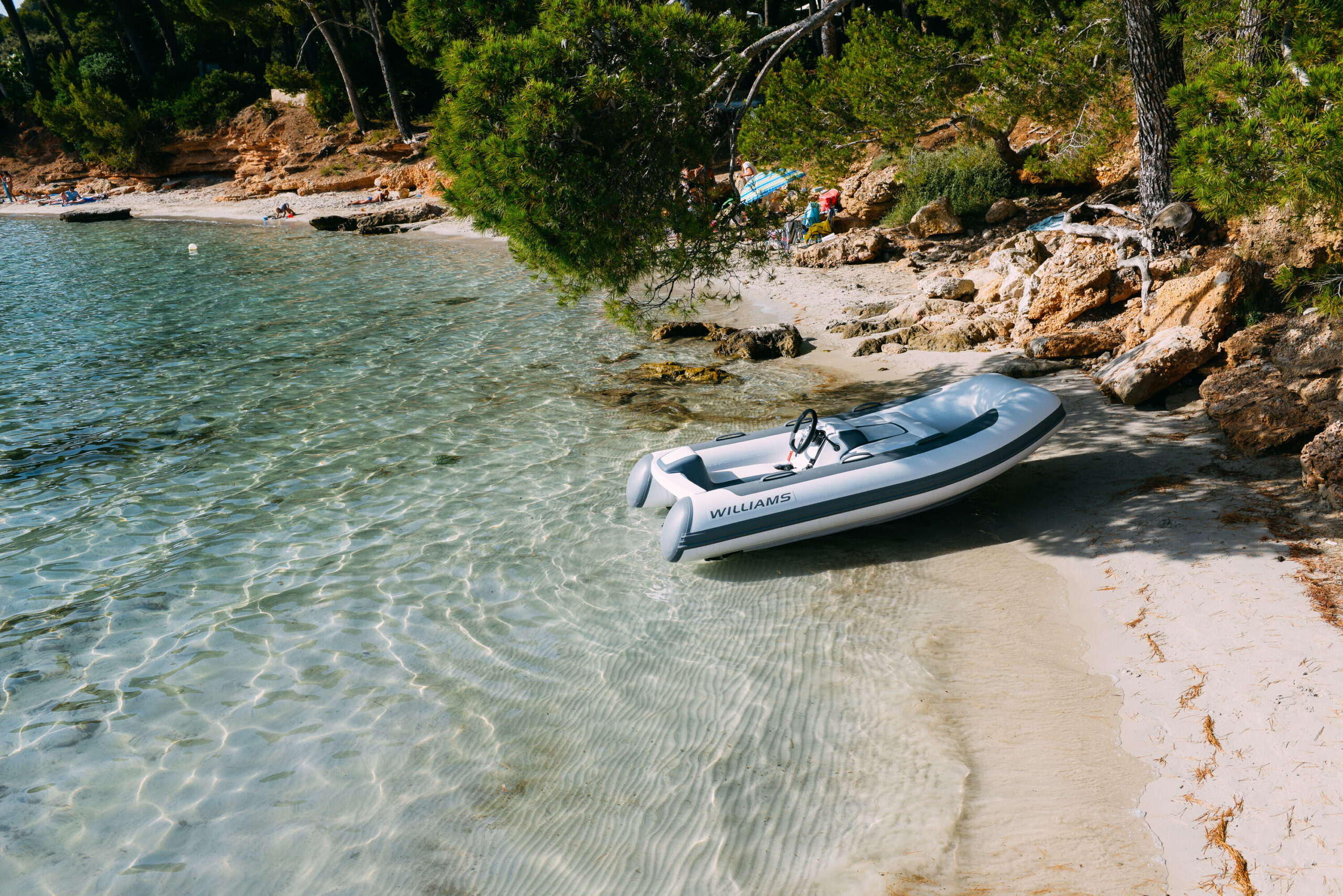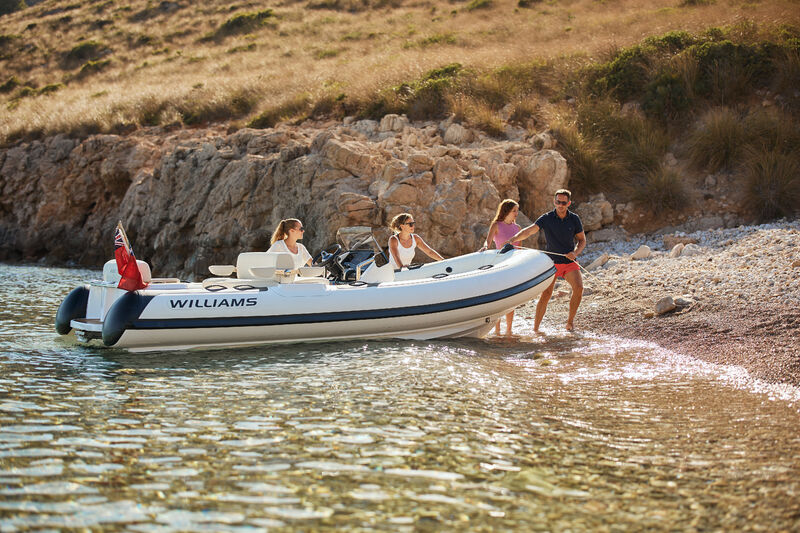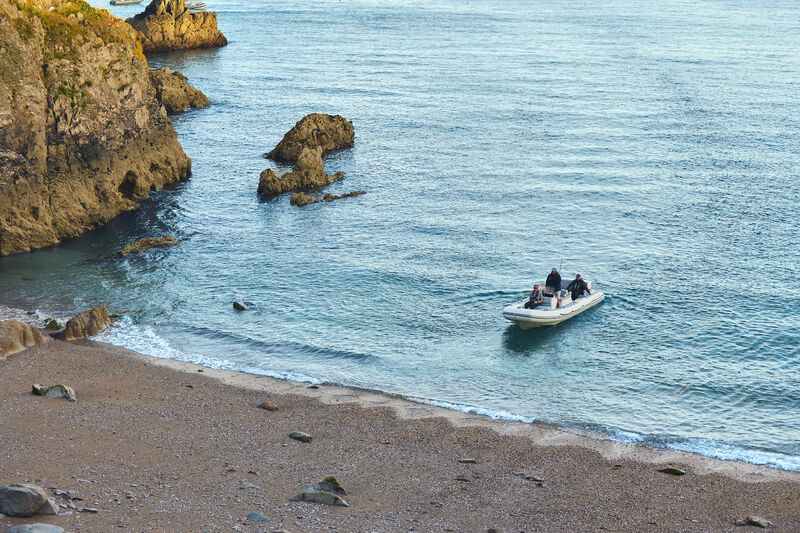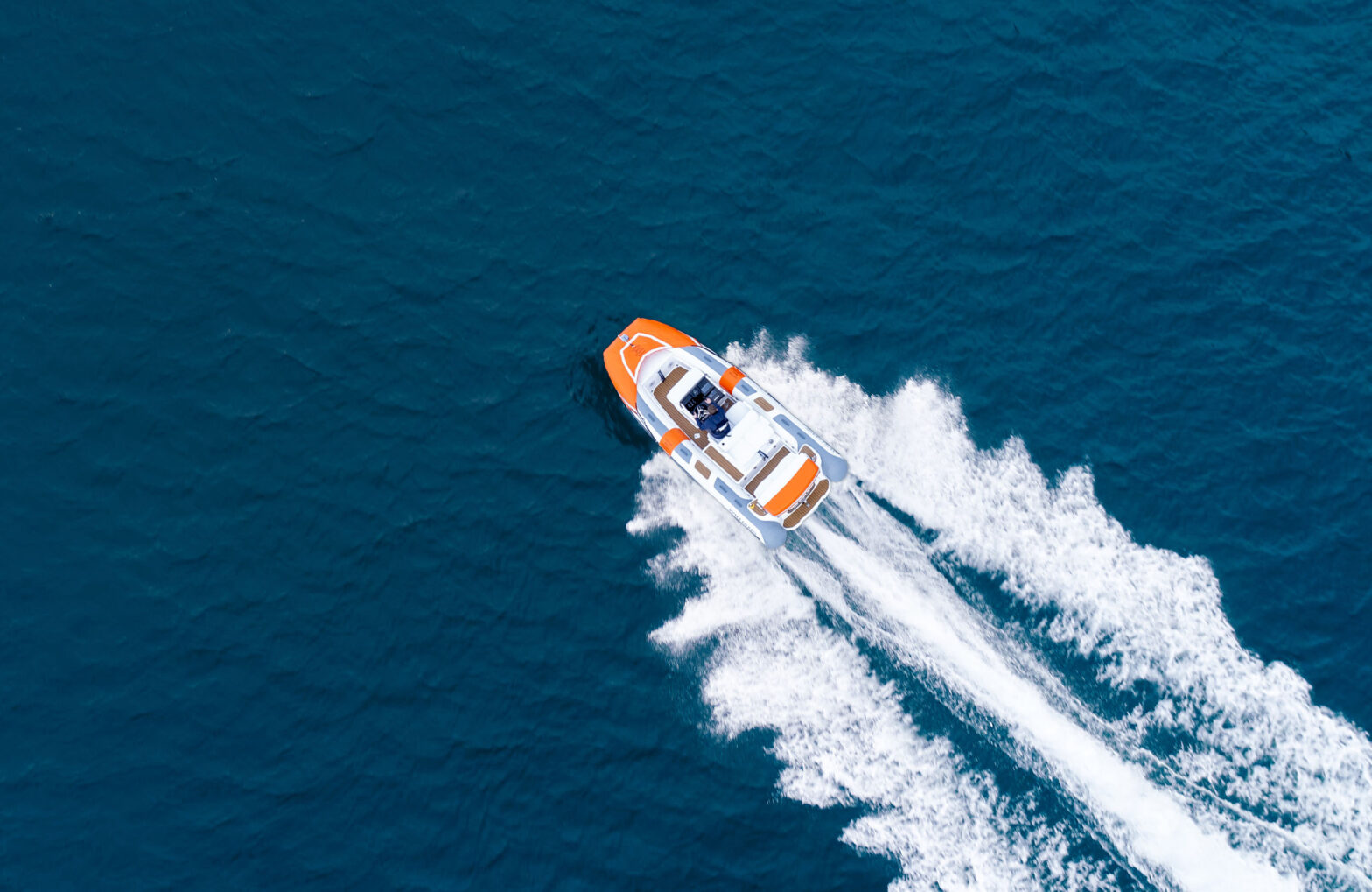Learn the art of safely beaching a jet tender, with step-by-step tips on approach, control, and post-landing care for a seamless, luxurious shore experience.
Beaching a jet tender allows you to bring luxury closer to the shore, letting passengers step out onto the beach without needing docking facilities. While the prospect is exhilarating, it requires knowledge, precision, and proper care for your tender. Here’s how to safely beach land your jet tender, ensuring a smooth approach and easy post-landing maintenance.

Can You Beach Land a Williams Jet Tender?
Williams Jet Tenders and similar luxury jet tenders are designed for versatility, including shallow water manoeuvring. With their shallow drafts, superior propulsion systems, and advanced control options, these tenders handle beach landings elegantly, even on sandy or soft shorelines. The agility of jet propulsion allows for delicate manoeuvres near shore, and the high-quality materials protect the tender’s hull from abrasions. Keel Guard also helps protect the hull from being damaged when put up onto a beach. Whilst outboard boats can be beach landed as well, they have a propeller in the water which needs to be protected by tilting the outboard up.

Steps to Safely Beach Land a Jet Tender
Achieving a graceful and safe beach landing requires both confidence in your vessel and a few carefully executed steps:
- Select the Ideal Beaching Spot
Begin by choosing a shoreline that offers a safe, sandy beach with minimal obstacles and low tidal impact. Avoid rocky shorelines or areas, as they may damage the tender’s hull. You also want to take into account the gradient of the beach line. If the slope is too gentle then you will need to cut power at a much earlier point or you risk sucking up sediment. You also want to be careful when the gradient is steep as this can cause the tender to ground more abruptly. Researching tidal patterns can help you find optimal times for beaching, with calm water and reduced wave action enhancing the ease of your approach. - Approach at a Controlled Speed and Angle
Approaching at a controlled speed and gentle angle minimises any disturbance of sand and sediment, but also allows you to pause and reassess your approach if needed. Most jet tenders offer precise throttle control, giving you the power to ease into position while maintaining a smooth, controlled descent toward the shore. - Precise Power and Gradual Steering
The technique is to give the tender enough power when there’s 1-2m of shallow water, and then kill the throttle so you glide effortlessly onto the beach, and prevent any sediment or weeds being sucked up. Steering gradually rather than making sudden adjustments will protect the tender and the shoreline allowing minimal sandbank disturbance. - Monitor Environmental Conditions
Stay aware of external factors like wind and wave strength, as these can affect your approach angle and speed. Calm conditions are always preferable, but a skilled operator can adjust the tender’s trajectory even with mild wind or waves. The key is maintaining a steady hand and being ready to change your course as needed. If possible, try to push the boat off the beach before starting the engine on your departure.

Post-Beach Landing Maintenance Tips

After a successful beach landing, follow a few maintenance steps to preserve your jet tender’s premium performance and appearance:
- Rinse Thoroughly
At the next convenient time (e.g. back at the mothership), rinse the tender to remove salt, sand, or mud from the hull and jet drive system. A good rinse helps avoid corrosion, especially if you’ve been in saltwater. Gentle, freshwater rinsing is ideal to keep the finish in pristine condition. - Inspect the Hull and Jet Drive
Check the hull and jet drive for any lodged debris or abrasions. Run your hand along the hull’s surface to feel for scratches or nicks that might need touch-up care. Jet tenders are built for resilience, but routine inspection post-landing ensures longevity and performance. - Lubricate Moving Parts as Needed
Light lubrication of moving parts, such as the jet drive mechanism, keeps your tender operating seamlessly, ready for its next adventure. This extra care helps maintain the tender for smooth operation each time you take it out.
Conclusion
Beaching a jet tender can be a refined and enjoyable experience, bringing the shoreside experience closer to the heart of your yacht journey. You’ll enjoy worry-free beach landings that showcase skill and elegance by choosing a safe spot, handling the approach with precision, and following a few essential maintenance steps post-landing. With the right touch and careful attention, your jet tender becomes a seamless extension of the yachting lifestyle, easily delivering you and your guests right to the water’s edge.
Share this story:
In other journals...

29 October, 2025
Planning the Perfect Shore Excursion with Your Yacht Tender

15 September, 2025
Williams MiniJet 280: The Ultimate Compact Yacht Tender


